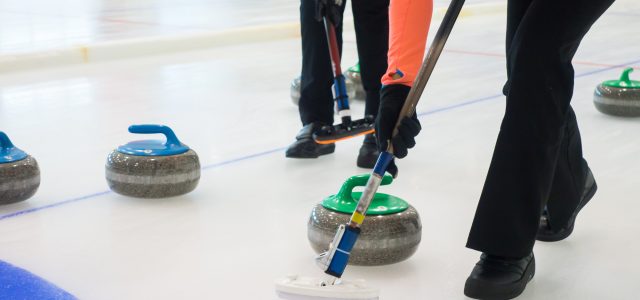
Bowled Over
Want to try a different sport? Well now you can, thanks to the new curling rink in Preston
The only time I see curling is on the TV when it features in the Olympics and have to say it has always fascinated and intrigued me. It looks a like a sport where skill, accuracy and teamwork are key. Curling is a fun and challenging game combining physical and mental skill and is one of the few sports where all ages, genders and abilities can play together and against each other.
The sport is played by two teams of four players on a rectangular sheet of ice. It has a nickname ‘The Roaring Game’, which comes from the rumbling sound the granite stones make when they travel across the ice. The teams take turns to deliver stones down the ice attempting to get closer to the centre of the target or ‘house’, than their opponents. When all 16 stones have been played, an ‘end’ of curling is complete. A team scores one point for each stone which is closer to the centre of the house than any of the opposition’s stones. Only stones touching the house can be counted.
Its origin actually lies in Scotland and is alleged to be one of the oldest team sports dating back to the 16th century, where it was played on frozen lochs over the winter months. The earliest-known curling stones came from Stirling and Perth in 1511. It was only in the 1600s that stones, 44-pound (19.96kg) with handles were introduced.
Naturally, Scotland was the obvious choice for the first curling club to open and the Grand Caledonian Curling Club was formed in 1838, changing its name to the Royal Caledonian Curling Club in 1843, where it has grown from strength to strength. The club was also responsible for formulating the first official rules of the sport. Since then key developments in the sport have included the standardisation of the stone, the development of the slide delivery, and the use of indoor, refrigerated ice facilities.
It first appeared on the Olympic programme in 1924, in Chamonix, France, with men’s curling, but was later dropped. It was then later reintroduced as a demonstration sport in 1932, used to promote the game. This continued between 1936 and 1992 and finally in Nagano in 1998, it appeared back on the Olympic programme with both men and women competing.
The English Curling Association was formed in 1971. It is a full member of the European Curling Federation and the World Curling Federation and is also a member of British Curling, the organisation which manages Great Britain’s Olympic and Paralympic curling programmes. It is committed to supporting, developing and promoting the sport of curling.
But you don’t have to travel up to Scotland to try out this sport. Now there is a brand new Olympic sized curling ice rink, which has recently opened at the new Flower Bowl entertainment centre in Preston. It is perfect for players of all ages and abilities, so everyone can have a go and it is wheelchair friendly too. And if you’re not sure what to do, you get an induction, safety briefing and then hit the ice. All the equipment is provided, so there’s no excuse.
The idea came about when Guy Topping, owner of the Flower Bowl development, was thinking about which activities to include. He went to visit some old friends in Kent and whilst he was there, they told him about their local curling rink near Tunbridge Wells. He went along to Fenton’s Curling Rink and really loved it. He followed it up with research and discovered that there was a Preston Curling Club, and that was that. Curling was the activity he chose.
The Flower Bowl hosts only the second purpose-built curling rink in England. It has four ice sheets and can be used by club curlers, social curlers and hopefully school groups, with the potential to become a centre of excellence.
So why not give curling a go. You could find that you get hooked.

